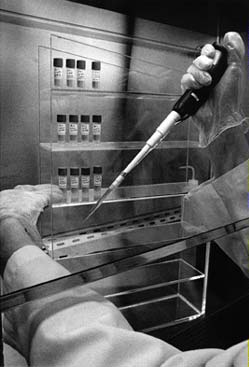The Initiative can only determine if polio has been eradicated worldwide after careful surveillance for cases of the disease. The world will be certified polio-free after at least three years of no polio cases, in the presence of careful surveillance. The 'polio endgame' is the phase that comes after certification. It aims at minimizing the risks of re-emergence of poliovirus. Eradication certification is issued by the Global Certification Commission, an independent board of experts.
This process has already happened in several WHO-defined geographic regions. The Americas had its last case of polio in 1991; it was certified polio-free in 1994. In 2000, the Western Pacific region, including China, was declared polio-free. The European region, including parts of the former Soviet Union, is on track to be certified in 2002. The world now awaits the end of polio in just 10 countries in Africa and south Asia.
Planning for the post-eradication era is also underway. Although the world should soon be free of wild poliovirus, research laboratories and vaccine manufacturers are holding samples. These facilities must be cleaned and secured to minimize the risk of re-introduction of poliovirus into the natural environment. In addition, much like with smallpox, a few strains of the virus will need to be stored in a secure location for research purposes, along with an adequate stockpile of vaccine.
Guidelines for this are detailed in the WHO Global Action Plan for Laboratory Containment of Wild Polioviruses. This plan substantially reduces the chance of re-introducing wild poliovirus into the natural environment. Completion of these containment measures is required for global certification of polio eradication, scheduled for 2005.
In very rare situations, the weakened virus used in oral polio vaccine can circulate in a population, eventually reverting to a form that causes paralysis. This happens in areas with low vaccine coverage, most recently in the Philippines and on the island of Hispaniola. These episodes have been stopped by boosting immunity through mass campaigns. However, this phenomenon requires careful international coordination if the world decides to eventually stop vaccinating against polio. Another tricky issue is determining the probability that a weakened vaccine virus could stay alive in an immunized person and later turn virulent. This problem has been identified in just a handful of immuno-deficient people.
It will take time to resolve these concerns. Final decisions about post-eradication immunization policy rest with national governments, to be voted on at a future meeting of the World Health Assembly. The global eradication of polio, now within our grasp, will be an enormous humanitarian achievement and will mean that the mass campaigns can cease. However, worldwide routine immunization against polio will likely continue in the foreseeable future.

© Sebastião Salgado
United States of America
Samples of wild poliovirus strains from countries where polio has already been eradicated stand on a shelf at the Centers for Disease Control and Prevention (CDC) in Atlanta. The CDC has been designated a secure site for the long-term storage of poliovirus following certification of global polio eradication.
 |